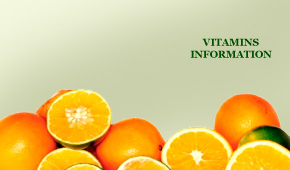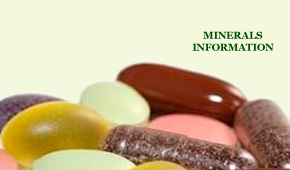ALOE VERA
 Information
Information
Aloe barbadensis, also known as Aloe vera is part of the Liliaceae plant family.Aloe is native to East and South Africa and is grown in most subtropical and tropical locations, including Latin America and the Caribbean.
General Information
There are over 500 species of Aloe, including Aloe perryi from Socotra Island or Zanzibar and Aloe ferox from Africa.
Botanical Name: Aloe barbadensis
Common Name: Aloe vera, Curacao Aloe, Barbados Aloe, Lily of the Desert
Plant Family: Liliaceae
History: The virtues of Aloe vera have been recorded for thousands of years by many ancient civilizations, including Egypt, Persia, Greece, India and Africa.
The name was derived from the Arabic alloeh meaning 'bitter' because of the bitter liquid found in the leaves. It is also known as 'lily of the desert', the 'plant of immortality', and the 'medicine plant'.
In 1500 B.C. Egyptians recorded use of the herbal plant in treating:
-burns
-infections
-parasites
The fresh gel was used by Cleopatra to keep her skin soft and young.
Aloe was used by the Ancient Greeks, Arabs and Spaniards and is still used by hunters in Africa to reduce perspiration and body scent.
The Spanish carried Aloe From Europe to the New World in South America and the Caribbean. Aloe barbadensis was introduced to the West Indies at the beginning of the 16th century. Spanish missionaries in the west always planted Aloe around their settlements and carried it on their journeys to aid the sick
Aloe was used extensively by American herbalists in the 18th and 19th centuries.
Plant Constituents of Aloe vera
Aloe vera leaf contains more than 200 different constituents. The juice contains, on average, more than 99% water.
Some constituents are:
-Acemannan and other polysaccharides boost T-lymphocyte cells which help promote skin healing and neutralize many of the enzymes responsible for damaging the mucosal wall
-Aloe-emodin
-Aloins, Barbaloin and Isobarbaloin
-amino acids
-amorphous Aloin
-approximately 96% water
-enzymes
-essential fatty acids (anti-inflammatory).
-essential oil
-Galactomannans (long chain sugars derived from plants)
-glycoproteins (protein-carbohydrate compounds that speed the healing process by stopping pain and inflammation)
-minerals
-polysaccharides (a type of carbohydrate that stimulates skin growth and -repair)
-resin
-vitamin C
-vitamin E
-Zinc
and mucopolysaccharides* [MPS] (long-chain sugars). Mucopolysaccharides [MPS] are found in every single cell in the body.
The human body stops manufacturing its own mucopolysaccharides around puberty and from then on must rely on outside sources.
Mucopolysaccharides work in the body by:
-assisting the transfer of gases in the lungs
-facilitating absorption of water, electrolytes and nutrition in the gastrointestinal tract and maintaining fluid movement
-generating healthy intestinal flora
-lining the colon to keep out toxic waste from the body
-lubricating the joints
-protecting teach cell from microbial invasion (especially viruses)
-stopping damage and leakage of the intestinal wall
Aloe latex contains:
-anthraquinone glycosides (these molecules are split by the normal bacteria in the large intestines to form other molecules called aglycones), the main one being aloin
Dosage:
Recommended dosage is as follows:
Fresh Plant:
-Cut the leaf and remove the gel from the inside. Clean affected area and then apply Aloe gel.
Dry Aloe latex (see Caution)
-up to 1 tablespoon
-1- 2 teaspoons 2 - 3/week to maintain regular bowel habits (under the supervision of a healthcare practitioner)
If taking dry Aloe latex you must drink a lot of water (not cold but at room temperature)
Liquid Aloe latex
-50-200 mg taken only once a day if being used as a laxative (discontinue when laxative effect is achieved)
Action:
-anthelmintic [an agent that destroys or expels intestinal worms and/or parasites; vermicide; vermifuge]
-antibacterial [an agent that destroys bacteria; bactericide]
-antifungal/yeast [an agent that destroys fungal conditions]
-anti-inflammatory [an agent to ease inflammation]
-antimicrobial [an agent that destroys microbes]
-anti-parasite effects [an agent that destroys parasites]
-antiviral [an agent that destroys viruses]
-emmenagogue [an agent that promotes menstrual flow]
-emollient [an agent used externally to soften and soothe]
-purgative [an agent that produces a vigorous emptying of the bowels, more drastic than a laxative or aperient]
-vulnerary [a healing application for wounds]
Usage of Aloe vera
The bitter yellow juice found between the gel and the outer skin of the leaf is dried and used as a laxative.
Medicinal Part used: The leaves, the fresh leaf gel and latex
-Aloe latex is the sticky residue left over after the liquid from cut Aloe leaves has evaporated
-Aloe vera extract is made by pulverizing the whole leaves of the plant
-Aloe juice and gel is made from the inner leaf (most commonly used for minor cuts and burns)
Old legends say growing an Aloe vera plant in the kitchen will:
guard against evil
help prevent burns and mishaps while cooking
prevent household accidents
It is reported that Aloe was used to embalm the body of Christ.
Aloe vera is commonly used for:
Bacterial, Viral, Fungal and Parasitic Conditions
-AIDS
-eliminates parasites (especially protozoan infections)
-relieves Herpes simplex & zoster
-relieves symptoms of Candida
-relieves symptoms of Epstein-Barr virus (chronic fatigue syndrome)
-relieves symptoms of fungal infections
-relieves symptoms of genital herpes
-relieves symptoms of yeast infections
-Staphylococcus infections
-vaginitis
-viral infections
Blood Conditions
-aids hyperglycemia
-aids in blood circulation
-hemorrhoids
-lowers blood sugar in people with type 2 (non-insulin-dependent) diabetes
Cardiovascular Conditions
-relieves hypertension
Female Conditions
-menstrual cramps and irregularity
-suppressed menses
Gastrointestinal Conditions
-acts mainly on the large intestine
-colic
-constipation
-dyspepsia
-facilitates digestion by aiding the immune system
-helps cleanse the digestive tract by exerting a soothing, balancing effect
-helpful to the stomach, small intestine and colon
-intestinal infection
-keeps the bowels functioning smoothly and helps when there is an impaction
-moves allergenic proteins from the small intestine into the colon
-aids in healing wounds by drawing out infection and preventing infection from starting
-naturally alkalizes digestive juices to prevent over-acidity
-promotes a favorable balance of gastrointestinal symbiotic bacteria and decreased yeast populations
-relieves nausea
-relieves symptoms of indigestion
-stimulates activity of the gastrointestinal tract
-stimulates intestinal motility
Genitourinary Conditions
-assists kidney function
Immune System Conditions
-allergic reactions
-has immune-stimulating actions
-strengthens the body's natural resistance
Inflammatory Conditions
-relieves arthritis
Liver Conditions
-assists liver and gall bladder functions
-helps hypercholesterolemia
Respiratory Tract Conditions
-colds
-relieves symptoms of esophagal reflex
-relieves symptoms of gingivitis
Other Conditions
-aids in lymphatic circulation
-as a cathartic for persons of a phlegmatic nature or sedentary habits
helps pruritis
-is beneficial for persons of a sedentary nature or phlegmatic constitution
-ulcerations
Other Uses:
To make a simple salve:
-Remove the thin outer skin of the Aloe Vera leaves
-Blend the leaves in a blender
-Add 500i.u. Vitamin C powder to each cup
-Store in refrigerator
Aloe vera juice soothes digestive tract irritations such as:
-colitis
-duodenal ulcers
-peptic ulcers
Aloe is used for inflammatory bowel conditions such as:
-Crohn's disease
-gastritis
-irritable bowel syndrome
-ulcerative colitis
-Externally Aloe vera gel is helpful for:
-abrasions
-acne
-boils
-burns
-bursitis
-carbuncles
-chafed and cracked skin
-chafed nipples from breastfeeding
-contusions
-cuts and scratches
-dandruff
-denture (gum) sores
-dermatitis
-edema (swelling)
-hemorrhoids
-inflamed eyes
-insect bites
-post-treatment dental discomfort and pain
-radiation burns
-rashes
-psoriasis
-skin irritation
-skin rashes
-sprains
-stings
-sunburn
-tendonitis
-ulcers
-varicose veins
-warts
-wounds
-wrinkles
-X-ray burns
by placing a protective coating on the affected areas which:
-accelerates the rate of healing
-increases the availability of oxygen to the skin
-decreases swelling and redness
-increases the synthesis and strength of tissue
-prevents blisters
-reduces inflammation
-relieves pain
Externally it can also:
-aid in keeping the skin supple
-draw out infection
-help control of acne and eczema
-have a moisturizing effect on the skin
-prevent infection
-relieve itching due to insect bites and allergies
Precautions
Caution:
-Aloe tends to gripe and may cause constipation so should be combined with a carminative for best results.
-Treatment of diabetes with Aloe should only be done under the supervision of a qualified health care professional
The latex form of Aloe should not be used by anyone with inflammatory intestinal diseases such as:
-appendicitis
-Chrohn's disease
-gastrointestinal illness
-intestinal obstruction
-stomach pain.
-ulcerative colitis
It should also not be used by:
-people with constipation for more than ten consecutive days as it may lead to abnormal heart rhythms, dependency and fluid loss which can deplete the body of important electrolytes in the body such as potassium
-children
-women during pregnancy as it may:
-cause uterine contractions
-trigger miscarriage
-women during breast-feeding as it may cause purging of the child
Aloe latex may cause:
-diarrhea
-nephritis (an inflammatory process in the kidneys)
-severe intestinal cramps
It may aggravate:
-colitis
-diverticulosis (small protruding sacs of the inner lining of the colon)
-hemorrhoids
-irritable bowel syndrome
-ulcers
Long-term use of oral aloe latex is not recommended as it can:
-turn urine brown or red
-become addictive
Aloe gel is considered safe when applied to the surface of the skin. Aloe gel is not useful for treatment of deep wounds. In rare cases, it may cause an allergic reaction.
Discontinue use of Aloe gel if the following occurs:
-dermatitis
-skin rash
Drug Interactions:
Do not use Aloe vera internally without first talking to your health practitioner if using any of the following medications:
Hydrocortisone
-Aloe gel may increase the ability of hydrocortisone to reduce swelling
Diabetic Medications
(Diabetics using Aloe latex alone or in combination with other medications need to be monitored under medical supervision to avoid potential complications from low blood sugar levels)
-Glyburide (used to treat type 2 diabetes) in combination with Aloe vera may help control blood sugar and triglyceride (fat) levels in the blood.
Diuretics
Aloe taken internally can decrease levels of potassium so should not be used if taking diuretics
Digoxin (a combination of Aloe and Digoxin can result in dangerously low levels of potassium)
-Digoxin (used to treat irregular heart rhythms and congestive heart failure) lowers potassium levels in the body
[AD]











